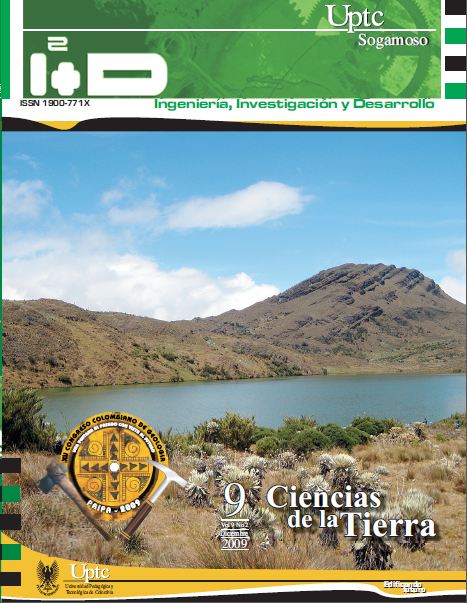Methodological approach for the zoning of the rock fall hazard in lineal projects

Abstract
In this communication it is showed a methodological approach for the zoning of the threat of rock falling, which may be applied in projects of lineal infrastructure or urban environments. It is based on a
multicriteria analysis that is supported by a solid base of data and that integrated in Arc-Gis/Arc-Info by an index of threat factors like the delimitation of the corridors of block transit, geological-geomorphologic cartography, cartography of RMR index, cartography of the susceptibility, and the volumetric analysis of talus deposits amongst others, allows to calculate for each transit corridor the index of threat, príoritize achieving for a process of risk management in short, medium and long term. The above mentioned methodology was applied with good results in Vall de Nuria that is devoted to mountain tourism, located in the eastern Pyrenees of Spain, and has its access by rack railway that crosses a quaternary glacial valley modeled in gneisses, and whose railway line has been affected several times by rock falling, putting passengers in risk and affecting the commercial service.
Keywords
rock fall hazard, susceptibility, risk management, geotechnical cartography, Vall de Nuria
References
- Baillifard, F., Jaboyedoff, M., & Sartori, M. (2003): Rockfall hazard mapping along a mountainous road in Switzerland using a GIS-based parameter rating approach. Natural Hazards and Earth System Science, 3(5), 431-442.
- Bieniawski, Z. T. (1993): Classification of rock masses for engineering: the RMR system and future trends. Comprehensive rock engineering, 3, 553-573.
- Budetta, P., & Santo, A. (1994): Morphostructural evolution and related kinematics of rockfalls in Campania (southern Italy): A case study. Engineering Geology, 36(3-4), 197-210.
- Copons, R. (2004): Avaluació de la perillositat de caigudes de blocs a Andorra la Vella (Principat d’Andorra) (Doctoral dissertation, Ph. D. thesis, UB, Barcelona), p. 244.
- Corominas, J., Copons, R., Vilaplana, J. M., Altimir, J., & Amigó, J. (2003): Integrated landslide susceptibility analysis and hazard assessment in the principality of Andorra. Natural Hazards, 30(3), 421-435.
- Hearn, G. J., & Griffiths, J. S. (2001): Landslide hazard mapping and risk assessment. ENGINEERING GEOLOGY SPECIAL PUBLICATION, 43-52.
- Hoek, E. (2000): Analysis of rock fall hazards. En: E. Hoek, practical rock engineering, course notes chapter 9, University of Toronto, www.rockeng.utoronto.ca/hoek-corner.html.pp. 115-136.
- Instituto Geológico geominero de España, (1994): Mapa geológico de España: Molló 2018. 37-10 (1:50000). Ed. Master’s Gráfico S.A., Madrid.
- Meibl, G. (2001): modelling the run out distances of rock falls using a geographic information system. Zetchrift für geomorphologie, suppi, Bull., 125, pp. 129-137.
- Mateos, R.M., Ferrer, M. y Gonzalez de Vallejo, L.J. (2001): Metodología para el análisis de la peligrosidad por movimientos de ladera, Aplicación en la zona de Sóller (Mallorca), Memorias del V Simposio Nacional sobre taludes y laderas inestables, Madrid 2001, Vol. I, pp. 355-366.
- Parise, M. (2002): Landslide hazard zonation of slopes susceptible to rock falls and topples. Natural Hazards and Earth System Science, 2(1/2), 37-49.
- Rendón, A., Vilaplana, J.M. (2004): Propuesta para evaluar y cartografiar la suceptibilidad a los desprendimientos en laderas naturale, Geotemas, 6 (1), pp. 359-362.
- Rendón, A., Vilaplana, J.M., y Copons, R. (2004): El análisis volumétrico de los depósitos de talud, Una etapa de la evaluación en la peligrosidad por desprendimientos. En G. Benito y A. Diez Herrero (Ed.),Riesgos naturales y antrópicos en geomorfología, Memorias de la VII Reunión Nacional Geomorfología, Toledo, España, 2004, Vol. II, pp. 413-421.
- Rouiller, J. D., Jaboyedoff, M., Marro, C., Philippossian, F., & Mamin, M. (1998): Pentes instables dans le Pennique valaisan. Ed. Hochshulverlag Ag an der ETH, Zurcí, p. 239, Rapport final PNR, 31.
- Rouiller, J. D., & Marro, C. (1997): Application of the MATTEROCK methodology for cliff danger evaluation. Eclogae Geologicae Helvetiae, 90(3), 393-399.
- Santanach, P. (1972): Estudio tectónico del Paleozoico inferior del Pirineo entre Cerdaña y el río Ter. Acta geológica hispánica, 7(2), 44-49.
- Trujillo, J., Hernandez, I., Martinez, A. y Durán, G. (2004): Análisis del riesgo por desprendimiento en el municipio de Santa Cruz de Tenerife, En G. Benito y A. Díez Herrero (Ed). Riesgos naturales y antrópicos en geomorfología, Memorias de la VII reunión nacional de geomorfología, Toledo-España, 2004, Vol. II, pp. 347-354.